
The US Ski Mountaineering Association (USSMA website) recently announced a changing of the guard with Nick Francis and Chad Brackelsberg stepping down from their positions as President and Vice-President. Ram Mikulas of Summit County, Colorado and Matt Hickey from Colorado Springs (originally from Minnesota) will be taking over their roles effective immediately.
Nick and Chad will continue in a support role while the new duo finds their legs. We reached out to Mikulas Ram to get some more information on the new President and where he hopes to take the USSMA under his leadership.
Q: How long have you been ski touring and ski mountaineering racing?
I grew up recreational hiking, climbing, and kayaking. After a shoulder injury I begun mountain biking a lot, fell in love with it and got involved with racing. That let to road racing, trail running, and finally skimo. I started off skinning resorts with friends 6 years ago and jumped right into racing. I loved how dynamic ski mountaineering racing is and was quickly hooked!
Q: What do you do for work when you are not out skiing?
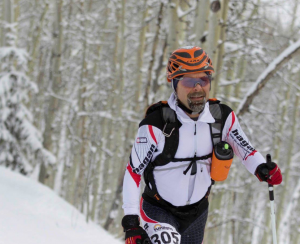 I worked in the corporate finance world in Denver, where I’m from, for many years. My wife and I had a weekend mountain getaway and played the weekend warrior game for a while, but made a change and moved up to Summit County 11 years ago. I work year round at Copper Mountain Resort as an eCommerce Manager. Awesome mountain, company, and people.
I worked in the corporate finance world in Denver, where I’m from, for many years. My wife and I had a weekend mountain getaway and played the weekend warrior game for a while, but made a change and moved up to Summit County 11 years ago. I work year round at Copper Mountain Resort as an eCommerce Manager. Awesome mountain, company, and people.
Q: What inspired you to go for the USSMA president position?
Whatever I’m involved in, I like to immerse myself and learn as much as possible and be involved below the surface. I quickly became passionate about the sport and wanted to find ways to introduce it to others and help it grow.
A few years back I worked with some other racers in Summit County, CO to help start the Summit Skimo Club. I’ve been acting as VP and have been leading a program we have to introduce new people to skimo and provide clinics for all abilities. I’ve had some great communication with Nick and others involved in the USSMA over the years. So, I suppose my passion for the sport and community has inspired me.
Q: What skills are you bringing that you believe will help you in leading the USSMA?
Organization, leadership, and communication which will be key moving forward.
Q: What are your primary goals to accomplish over the next few years?
The Vision of the USSMA is to expand the sport of Ski Mountaineering throughout the United States, with a current primary focus on developing the association into a fully functional national sports organization.
My goals will be to establish formal structure and process within the association and to become financially viable and appropriately resourced. With the recognition of the IOC and looking toward inclusion in future Olympics, I will strive for an enhanced focus on fundraising and developing athletes.
Q: Will the US develop a standing ‘National Team’ separate from its ‘World Championship Team’ similar to Canada and other countries?
This is a direction the USSMA would like to move toward as we focus on developing athletes. As for when and to what extent will need to be determined by available resources.
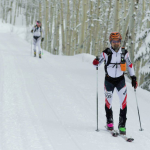 Q: The US has large participation numbers for skimo. Why do you think this is?
Q: The US has large participation numbers for skimo. Why do you think this is?
Awareness and access to uphill skiing is growing and resorts are beginning to embrace this new demographic. SIA (SnowSports Industries America) data reports strong growth in the backcountry / uphill sector. I think the bottom line is that the word is out and people are trying it, which leads to more people participating at a recreational and competitive levels.
Q: How can the USSMA encourage more US athletes to race on a world stage (World Cups and Grande Course events)?
As the USSMA builds resources and a National Team is developed more awareness, exposure, and support should be available to assist and encourage US athletes to race abroad.
Q: How does the PRO2022 program encourage athlete development?
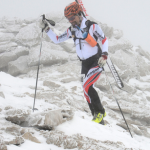 Project 2022 is a concept to identify up and coming skimo athletes that the USSMA can help develop into future Olympians. PRO2022 Camps will be put on throughout the country in skimo hot spots to identify talent, coach the coaches, and build the foundation with the under 23 (U-23) age group.
Project 2022 is a concept to identify up and coming skimo athletes that the USSMA can help develop into future Olympians. PRO2022 Camps will be put on throughout the country in skimo hot spots to identify talent, coach the coaches, and build the foundation with the under 23 (U-23) age group.
Instruction is built around the ISMF Sprint Course (likely Olympic event) and designed to “shortcut” American skiers’ path to elite skimo technique. The first camp was held a week ago in Summit County, CO and was a big success with many U23 athletes and coaches. Plans are underway for setting up additional camps this season. More communication to come.
Q: Right now a focus is on ‘coaching the coaches’, what does this mean and how is it being accomplished?
The focus is to build a coaching and support structure to develop athletes. PRO2022 Camps in 2016/2017/2018 will include “coach the coaches” to train regional coaches on the US skimo coaching methodology.
Call for Comments & Suggestions
What questions would you pose to the new USSMA leadership? How do you think skimo racing could be progressed in North America?
More reading: Interview ISMF President
The above interview was second in our “presidents interview series” so if you would like to know more about direction of skimo on the world stage read Interview with ISMF President about Skimo & Olympics and Anti-doping Efforts with Armando Mariotta.
ISMF
Interview with ISMF President about Skimo & Olympics and Anti-doping Efforts
With many things going in the right direction for the sport of ski mountaineering racing, we reached out to Armando Mariotta – the president of the International Ski Mountaineering Federation (ISMF) – for an interview with 10 questions we were curious about.
We divided them into two sections – Future of our sport and its place within Olympics, and ISMF’s anti-doping efforts.
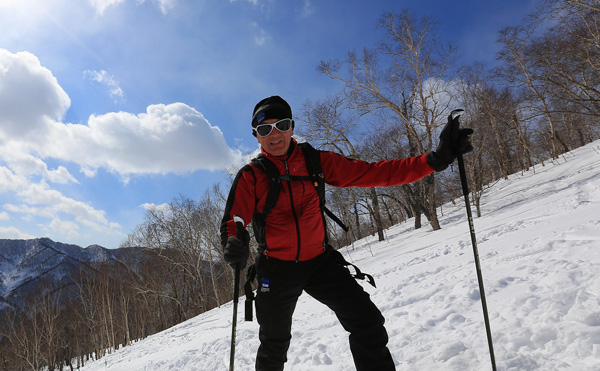
Future of Ski Mountaineering Racing & Olympics
Q: By IOC recognizing the ISMF this summer, skimo racing is one step closer to be an Olympic sport. What are the things that still need to happen for skimo to truly be in Olympics one day?
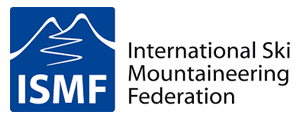 Just to be clear: the IOC recognition has been for the ISMF and not for skimo as a new Olympic Sport. With the full recognition we can now ask the IOC to accept our sport into next Olympic Games.
Just to be clear: the IOC recognition has been for the ISMF and not for skimo as a new Olympic Sport. With the full recognition we can now ask the IOC to accept our sport into next Olympic Games.
Q: Do you think skimo racing as a sport will be included in Beijing 2022 Winter Olympics? Also, would it be officially called “skimo racing” or “ski mountaineering racing”?
Our first effort is to enter the program of Youth Olympic Games in Lausanne 2020 and then we could ask to enter Beijing.
The name of the sport is clearly ski mountaineering.
Q: Which skimo disciplines are the most likely to make it into Olympics?
The first step will be to have an acceptance by the IOC for a new sport into the Winter Olympic Games and then we’ll discuss which discipline(s). As you know for example sport climbing had all the three disciplines but only one medal.
Q: ISMF recently renewed its media contract with Infront Sports & Media – a big sports media company that represents all seven Olympic winter sport federations, manages media rights for the FIS World Cup Events, and even represents big football/soccer teams. What does this mean for skimo?
The contract will give to the ISMF and to our sport many new possibilities to grow in the international TV visibility, a space to the organizers for their sponsors in the TV area range, some money to the ISMF and the possibility to have a Press Agent (Lucia Galli) for the institutional and sport press releases.
Q: What is the ISMF’s plan to encourage more youth participation in our sport? And what are your thoughts on growing our sport as a whole?
With the limited resources we have we are working for youth. For example, thanks to the collaboration of DAV and OSV from 8 to 11 December we are going to organize a youth camp in Austria for aspirant young athletes. In view of the work for the YOG we have new ideas and projects.
Q: Is it true that most of the ISMF personnel (staff, referees, committee members, etc.) are volunteers and receive no money?
You are right. All the members of the Executive Board, Management Committee, Commissions are volunteers as well as the Referee Manager and the Referees.
The only people paid are the Secretary (Giulia Avagnina), the director of the Sport Department (Rebecca Vernon) and the technical director (Gil Orriols).
You can completely read our 2015 accounts revised by the auditor on our Website www.ismf-ski.org – official documents section.
Anti-doping Efforts and Latest Doping Cases
ISMF has accepted WADA anti-doping code couple of years ago, thus, I would like to ask a couple of questions regarding anti-doping efforts in our sport.
Q: During World Cups and World Championships, does ISMF test athletes directly or does it coordinate the testing with a national anti-doping body in that country?
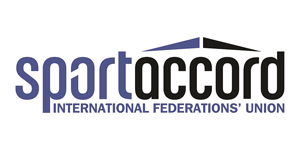 The ISMF some years ago decided to sign an agreement with SportAccord as service provider for the anti-doping tests, so they organize directly all the controls.
The ISMF some years ago decided to sign an agreement with SportAccord as service provider for the anti-doping tests, so they organize directly all the controls.
Q: How many in competition and out-of-competition anti-doping tests does ISMF (on its own or through its partners) performs every year?
In the average the ISMF through its provider SportAccord does:
- 28 In-Competition tests (28 Urine tests)
- 81 Out-of-Competitions tests (36 Urine tests + 3 Blood tests + 42 Blood tests included the Athlete Biological Passport)
- 17 Out-of-Competition blood tests covered by National Anti-Doping Organizations (NADO) as part of Athlete Biological Passport (ABP) sharing agreement
Moreover, the ISMF includes at least 10 top-level athletes in the Registered Pool Testing (RTP) every year.
Q: Were there any positive doping tests in skimo in the last 5 years? Where does ISMF publish this information?
There have been two Adverse Analytical Findings in skimo in 2015, if we consider the past 5-year-period: one RTP athlete in World Championships in Verbier, and one popular athlete in a La Grande Course race (long distance teams race).
Information about the first case was officially given with the press-release on 3rd December, 2015 which can be found at www.ismf-ski.org – News section.
Concerning the second case, another official communication will be published always in the news section of the ISMF website in the near future.
Q: How many Therapeutic Use Exemption (TUE) applications does ISMF receive every year? What percentage does usually get approved?
The 2016-2017 season will be the first one with the management of the TUE for the ISMF. In the past, it was a management of national federations, so we don’t have this type of information.
Our Thoughts
From one of the answers it is very obvious that our sport is still small despite so many great races and its history. It seems like the only way to grow is through becoming an Olympic sport because TV rights are where the money is – we wrote about this in regards to skimo two years ago.
With potentially more money coming into the sport in the future there will likely be a rise in the number of doping cases. This is just a fact and not only in sports but sadly in society in general. However, we believe that skimo will continue to be one of the best sports to put your children in.
What are your thoughts? Or questions you would ask? Please share them in the comments section below. Thank you.
Is Your Skimo Helmet Legal for Racing? New ISMF Rule and the EN 12492, EN 1077 and UIAA 106 certifications
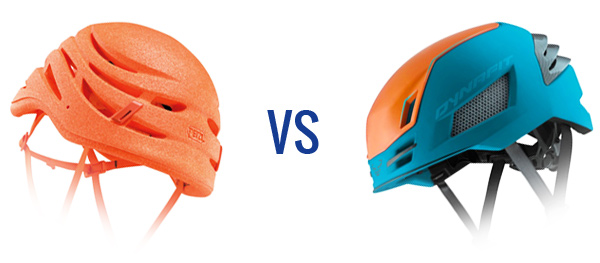
Several weeks ago, we hinted that some new ISMF rule changes will affect the gear skimo athletes will need to use at ISMF sanctioned races starting in the 2016/17 season. Since then one of the most debated topics among athletes revolves around helmets.
Here, we are taking a deeper look at:
- the new ISMF helmet rule and how it will affect the use of your (and our) current helmets,
- what the certifications/standards mean,
- what you should pay attention to in a store,
- which helmets currently on the market have both of these certifications.
* ISMF stands for International Ski Mountaineering Federation and is the world governing body for skimo racing.
The new ISMF rule and required helmet certifications
For years, ISMF required our skimo racing helmets to meet only the UIAA 106 or EN 12492 standards. Both are basically the same and saying a helmet has been certified for mountaineering.
However, with the beginning of the new racing season our helmets will also require the EN 1077 classB standard – effectively meaning, a helmet has been certified for alpine skiing.
This is the helmet rule to the letter as of last update in early October 2016:
A helmet conforming to:
– UIAA 106 (For season 2016-2017 : UIAA 106 and EN 1077 classB standards)
– or EN 12492 (For season 2016-2017 : or EN 12492 and EN 1077 classB standards).
Helmets must be used (chin-strap has to be fastened) during the whole race (from the start to the finish line). CE/UIAA: Yes.
What do these certifications and standards mean?
In a nutshell, this is the difference between the two certifications/standards:
- UIAA 106 and EN 12492 standards test and approve helmets mainly for impact from above such as rockfall, hence, the standard was designed for climbing and mountaineering helmets.
- EN 1077 standard tests and approves helmets for alpine skiing where a lot of impact is happening on collision or when a skier falls. Statistically, in such situations the impact is coming from the sides or the back of the head.
This standard further divides into class A and class B, which essentially only differentiates the amount of head’s side and back areas covered up by the helmet. Class A helmets cover the head more while class B helmets less, however, both meet the same minimal impact force requirement protection from directions defined in the standard.
Do you really need a new helmet?
The answer is not black and white. First check your old helmet for certification tags to see whether or not it is compliant with both standards. Beyond this:
- You will need a new helmet if you are planning on racing in World Cups, World Championships or any races that fully comply with ISMF rules.
- You may not need a new helmet right away for racing in smaller events in the US, Canada and other countries depending whether their federations and organizers follow ISMF rules to the letter or are a bit more “accommodating” for the sake of growing the local skimo scene.
As for US and Canadian races, we received confirmation from both federations that they won’t be enforcing this rule in the current season, and will only start to do so from 2017/18. This is because many of the new helmets won’t even make it to North American market this year.
Buying your new certified skimo racing helmet
When buying your new lid you want to make absolutely sure that it has the above specified double-certification. Check for those little “EN” stickers or tags inside the helmet or on manufacturer’s website as not all store employees will know the correct answer.
Ventilation
We are curious to see how the new helmets will ventilate. While safety is a priority, in skimo we spend majority of time climbing, with the surface of our heads being one of the most important areas through which the body cools. On most ski-rated helmets, vents are conspicuously absent – likely because they are primarily designed for descending, and therefore warmth.
Road cycling also went through this “ventilation” debate but the speeds reached on a bicycle while climbing are much higher than while skinning and the helmets don’t need to meet the mountaineering standard; therefore, cooling is much easier. It will probably take a few years before a happy medium is found and a manufacturer can develop a new skim0-specific design.
Currently compliant helmets on the market under 500g
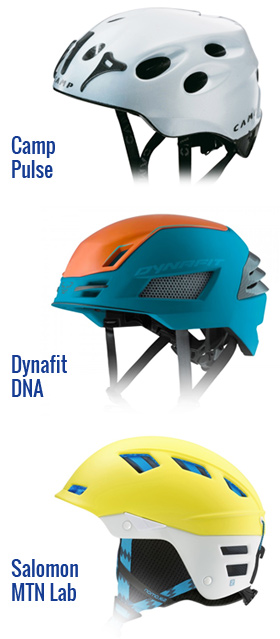 According to our own research (mainly based on manufacturers’ websites) here is a list of helmets that comply with the new ISMF rule and are currently on the market.
According to our own research (mainly based on manufacturers’ websites) here is a list of helmets that comply with the new ISMF rule and are currently on the market.
However,many of these won’t be available in North American stores just yet.
Alpina Snow Tour – 330g
Camp Pulse – around 360g (must be used with winter kit for double certification)
Cebe Trilogy – around 360g
Dynafit Daymaker – 320g
Dynafit DNA – 290g
Dynafit ST – 320g
Kong Kosmos – 390g (also certified for cycling)
Mammut Alpine Rider – 430g
Salewa Vert FSM – 400g
Salomon MTN Lab – 300g – Read our review!
Ski Trab Casco Gara/Race – 280g
Ski Trab Casco Maximo – 280g
Uvex P.8000 Tour – 310g
Non-compliant but popular “ski mountaineering” helmets
Note that some of these helmets might meet the EN 1077 standard for skiing in the future but they first need to be tested for it, thus, as of now they don’t comply:
Black Diamond Vapor
Black Diamond Vector
Camp Speed 2.0
Dynafit Radical
Edelrid Shield Lite
Kong Leef
La Sportiva Mulaz (same as Crazy Idea Crazy NRG)
La Sportiva RSR (same as Crazy Idea Crazy Carbon)
Petzl Scirocco
Petzl Meteor
Ski Trab Attivo (same helmet as Kong Leef)
Important Changes to 2017 ISMF Race Gear Rules
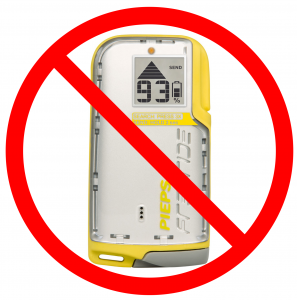 Several important rule changes were adopted in that will impact racers competing on the World Cup and at World Championships level in the upcoming 2017 season. Sources inside the International Ski Mountaineering Federation (ISMF) say that a grace period was given to athletes last season with enforcement of the rules beginning this year.
Several important rule changes were adopted in that will impact racers competing on the World Cup and at World Championships level in the upcoming 2017 season. Sources inside the International Ski Mountaineering Federation (ISMF) say that a grace period was given to athletes last season with enforcement of the rules beginning this year.
Three-antenna Transceivers Will Be Required
All avalanche beacons must be a full three-antenna model. This will primarily impact racers using the lightweight Pieps Freeride which will no longer be compliant. Thankfully, Pieps showcased a new lightweight three-antenna beacon in January, called the Pieps Micro, weighing in at 150g (the Freeride was 110g).
We suspect that all but the most hardcore racers will opt to use their normal ski-touring beacon rather than dropping nearly $400 USD on a new beacon. However, every gram counts and the beacon will last many more seasons than a pair of skis or boots.
Zippered Transceiver Pocket
Another related change is the requirement that beacons must be placed inside an internal zippered pocket. Putting the beacon in a skin pocket is not allowed and even the dedicated beacon pockets found on more recent Dynafit and Crazy Idea suits with the two overlapping flaps of fabric will not be compliant.
Thus, right now it might be a good time to do some surgery on your suit to add a small zipper.
Double Helmet Certification
The other big change is the requirement that helmets must be certified to both climbing standards (UIAA 106/EN 12492) AND a ski standards (EN 1077). Most current helmets (Petzl Sirocco or BD Vapor for example) in use by racers are only rated for climbing. If you are unsure, check your helmet for a sticker that shows the EN 1077 designation. If you have that, you are good to go!
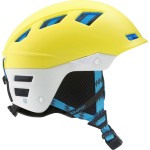 As far as we can tell, only a few manufacturers have released double-certified helmets:
As far as we can tell, only a few manufacturers have released double-certified helmets:
Ski Trab Gara – 280g
CAMP Pulse (with the addition of the winter kit) – 339g
Dynafit DNA (we can’t actually find this for sale anywhere) – 290g
Salomon MTN Lab – 300g
There might be a slight chance that some of the currently non-compliant helmets might not have been tested for the ski certification before but manufacturers will pursue this in the future and become compliant if they pass. But it’s impossible to know.
Ventilation
We are very curious to see how the newly certified helmets will ventilate. While safety is a priority, in skimo we spend 95% of the time climbing and sweating heavily, with the surface of our heads being (one of) the most important areas through which the body cools.
Road cycling also went through this debate, however, the speeds reached on a bicycle while climbing are much greater than while skinning. We suspect that it will take a couple of years before a happy medium is found.
2017 Skimo World Cup Calendar, World Championships, La Grand Course + Update on IOC recognition of ISMF/Skimo
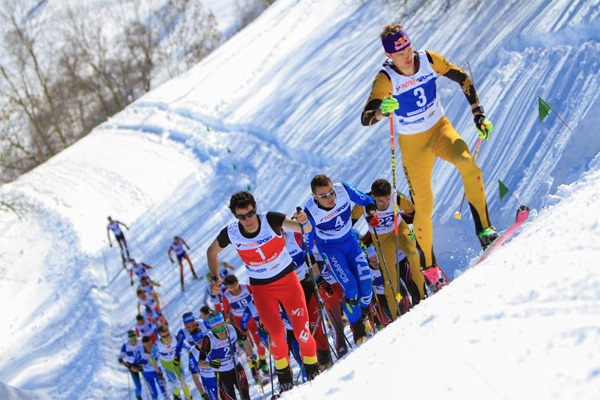
Recent International Ski Mountaineering Federation (ISMF) annual meeting brought many important decisions and updates regarding our sport. The meeting took place last week in Albufeira, Portugal.
Update on IOC recognition of ISMF
ISMF President Armando Mariotta presented that “…the full recognition of ISMF as an Olympic Federation will be taken at the beginning of August, during the 2016 Rio Olympic Games opening working session.”
Should IOC recognize ISMF as an Olympic Federation then this would be a major step for skimo racing to be included in the Olympic Games at some point in the future, perhaps even in the next few years.
2017 World Cup calendar and new La Grande Course (long course) arrangement
A new format is being designed between ISMF World Cup and LGC circuit. This should be an important development for all serious (international level) skimo racers.
The ISMF vice president, Lluis Lopez said: “We believe in keeping the link strong, but we don’t want to impose any format. The aim is to share the same path in the sake of ski mountaineering and the desire to continue collaborating has been the priority from both sides”. Pierre Dupont, representing the French Federation, has been in charge of conducting the new arrangement and added that “the Grande Course will no longer be a part of the World Cup, but will remain under the spirit of ISMF.”
2017 ISMF World Cup and La Grande Course calendar:
 WC = World Cup
WC = World Cup
LGC = La Grande Course (under ISMF)
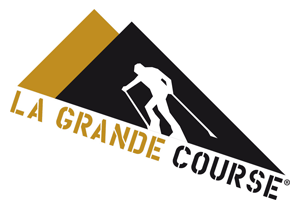
January 14-15: Suggested dates for countries for their National Championships
January 21-22: Font Blanca WC (Andorra)
– individual (day 1)
– vertical (day 2)
January 28-29: Alp d’Huez WC (France)
– individual (day 1)
– sprint (day 2)
February 11-12: Turkey WC (Turkey)
– individual (day 1)
– sprint (day 2)
February 23 – March 2: ISMF WORLD CHAMPIONSHIPS – Transcavallo (Italy)
– exact race schedule is yet to be determined
March 8-11: Pierra Menta LGC (France)
– 4-day stage race
– Wednesday to Saturday
– total climbing close to 10,000 m
March 24-26: Mondole Ski Alp WC (Italy)
– vertical (day 1)
– individual (day 2)
– sprint (day 3)
April 2: Adamello LGC (Italy)
Most likely courses:
– for men: 4000m ascent, 4380m descent
– for women: 3100m ascent, 4380m descent
April 8-9: Val d’Aran WC (Catalonia, Spain)
– individual (day 1)
– vertical (day 2)
April 16: Easter weekend (no international racing)
April 23: Mezzalama LGC (Italy)
– classic route from Breuil-Cervinia to Gressoney
– alternative dates in case of cancellation are April 29, 30 and May 1
New way of ranking
There will be a World Cup winner which will be, year by year, the best performer in the ISMF World Cup races, according to the three disciplines – individual, vertical and sprint. Furthermore, there will be a World Ranking, rolling up on yearly basis, which will take into account the athletes’ points earned from the ISMF World Cup, the Champs(World and Continental), the LGC and the ISMF series.
“By doingso, we want to stress the importance of all the races, including the ISMF series which will become more appealing also for top level athletes”, says Marco Mosso, vice president, marketing & communications.
What if SkiMo becomes an Olympic sport?
Back in April, most of us caught the news that the International Olympic Committee (IOC) granted a provisional recognition to the International Ski Mountaineering Federation (ISMF). This comes after about a decade of hard work from the ISMF and all national skimo federations who together are trying to get ski mountaineering racing back into the Olympics.
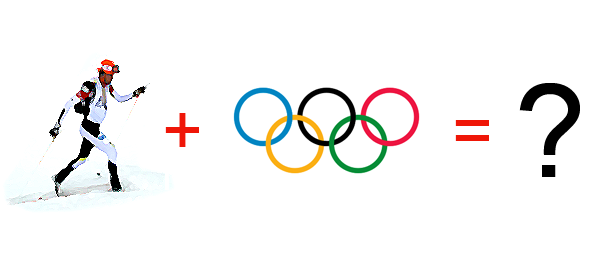
What does the provisional recognition mean?
If you were getting excited about watching skimo racing on TV during the 2018 Olympics in Pyeongchang, South Korea then you can relax because that is unlikely to happen.
In my understanding, this is just the very first step for a sport to have a chance to be included in the Olympics in the future. First, the IOC recognizes there is a large enough organized sport; second, it observes and tries to figure out how is this sport salable for broadcasting; and finally, it maybe includes the sport in the Games.
However, even if the inclusion is looming, the IOC still has to consider whether to just add another sport or kick one out in order to include a new one. It’s business, no other way around it. Environmentally friendly sport or not, the ROI will have to make sense. (Unless some other federation/sport would subsidize it.)
What’s next? Broadcasting rights.
Since the ISMF has the IOC recognition now, we are onto the second step – observing and figuring out how to make skimo TV friendly. What I mean by that is the sport needs to accomplish couple of things to be right for (live) broadcasting:
- attract enough audience,
- based on which numbers broadcasting company can sell advertising,
- which in turn brings enough money to pay for production and distribution costs,
- and have some profit left over.
By now, you might be thinking why I am so focused on TV broadcasting as the only way of monetizing Olympic Games since we know there are other ways for sports to make money. And you are right, there are. But according to IOC revenue sources and distribution page selling broadcasting rights brings the IOC 47% of its revenue. Then 45% is from sponsorships, only 5% is from tickets, and 3% is from licensing.
If we take skimo and say “let’s a find a away to replace some broadcasting money with something else” we will quickly run into a problem. Who would the sponsors be? From what I know, from approaching outdoor companies with offers to advertise on Skintrack, they all have very little money, or so I am being told. That means, there would have to be some big players that are (also) involved in the outdoor industry to pay the difference. Could it be Salomon? Maybe. Black Diamond? Perhaps. Will it be enough? Maybe Adidas since they make some outdoor clothing.
But really, how much money are we talking about for broadcasting rights?
Just a few days ago, the IOC awarded NBC Universal the broadcasting rights (across all platforms) in the USA for the Olympic Games from 2021 to 2032 for $7.65 billion USD. There was also a $100 million signing bonus. And we are talking about the USA rights only.
What does this mean for skimo?
If we agree that a major decision factor, for skimo racing to make it into Olympics, will be whether it can attract large enough audience (advertising money) that will pay for the production costs then there are about two or three scenarios of how this will impact our sport:
1. Skimo stay as is – very unlikely:
- Broadcasters figure out a super cost efficient way to film skimo races in all kinds of weather and terrain to off-set the not so big viewers demand.
- Or the audience rapidly grows in the next couple of years to pay for the production and distribution.
2. Skimo changes drastically – most likely:
Unless the audience grows rapidly, broadcasters will need to lower their costs substantially and make it watchable for the masses. This can be pretty much done in only one way – by changing the sport until it fits the financial equation.
It is difficult to predict how big or small the changes would need to be but I wouldn’t be surprised if this meant lapping the same course (full length individual race) a couple of times and avoiding possible problematic terrain (alpine, etc.) in the process.
And why not have that as the first option on the table? Because after all, even the Olympic 50 km cross-country races are done on an amazingly short loops now:
The use of short loops allows spectators in the stadium to see the contestants every 10-12 minutes. – quoting directly from Sochi Games website explaining the 50 km race
That means that during the Sochi 50 km skate (freestyle) race the athletes did 9 or 10 laps since the winner’s time was just under 1 h 47 min.
3. Skimo changes at least a bit – very likely:
Maybe the change will not need to be as dramatic as I painted above but it still will likely be considerable.
Are Olympics good for skimo? Why we want it there?
So with all this discussed, pretty much the only two questions that really matter are:
- Will Olympics be good for skimo?
- Why do we really want skimo to be an Olympic sport?
These are the most important questions we need to ask because they force us to look inside and evaluate our sport from its roots, to its current state, to its future. Answers will of course depend on individual values, priorities and motives.
As for myself, I am quite undecided about skimo as an Olympic sport but here are some of my thoughts:
If Olympic skimo should degrade to laps sport in unnatural terrain would it still be ski mountaineering racing as we know it? Aren’t we perhaps already half-way there but threading the line still on the good side?
For example, if we look at the sprint, I believe the discipline was invented to comply with the broadcasting “rules” I outlined above, thus, to please the IOC. Do I like the sprint? Kind of. Is it ski mountaineering racing? Definitely not.
Another one would be the vertical race. It has been shortened over the last few years and even a simple technical element such as boot-packing has been ruled out. Only skinning and no transitions are how verticals are done now. So, at its current form, how is it different from a cross-country ski race? Yes, it’s steeper but why not just use xc gear with skins glued on?
On the other hand, Olympics would bring lots of money which would make it appealing to more people – growing our sport significantly. Therefore, maybe we should be happy that more people would be participating in something we believe is the best sport in the world.
Ultimately, the only thing we can do is to watch carefully and demand change if we don’t like where skimo is going. Whichever direction we prefer.
What are your thoughts on skimo becoming an Olympic sport? I am very interested to read them.
ISMF White List: List of approved equipment, clarification… and some confusion
As we were busy researching gear for comparison pages of the lightest equipment the last couple of weeks – skis, boots and bindings – the International Ski Mountaineering Federation (ISMF) was busy creating a list of gear that would be approved for racing. They labeled it the ISMF White List.
Show me the White List
Unfortunately, due to the way the ISMF website is built there is no unique link to any page on their site, same goes for White List.
Therefore, to browse the White List go to ISMF home page and in the middle column you will see a banner that will point you to the right page.
The navigation through the White List is somewhat confusing, so be patient and forward thinking 😉
Clarification
People that studied the latest version of the ISMF competition rules (for 2012/13 season) know that there are some grey areas that create confusion about whether a certain piece of equipment would be in fact legal at an ISMF sanctioned event.
On top of that, the White List doesn’t seem to include some big names at the moment, for example Dynastar and Pierre Gignoux are not there.
With curiosity I emailed ISMF directly my questions:
Thank you for the information on the newly created equipment white list. And hopefully you can clarify something for me.
I own and are planning to buy some equipment that is not currently on the “white list”, so I want to ask:
If equipment is not on the white list does that mean it is illegal for ISMF sanctioned competitions (such as World Cup)?
What about Dynastar skis or Pierre Gignoux boots (those brands and their equipment are not on the white list), will you allow me to compete with that equipment?
Does a company have to be part of the manufacturers’ pool in order to make their equipment legal, put on the white list?
I got an answer yesterday which is actually almost identical with what they just clarified on their website (home page banner). But they clarified even further which I thanked them for.
ISMF response (interesting in red):
“The ISMF White List is a list of products all relevant to competitive ski mountaineering – provided by various manufacturers which are member of the ISMF Manufacturers’ Pool. Each product is self-certified by the manufacturer to fit within ISMF Sporting Regulations. Therefore when a skier looks at the ISMF White List he/she knows that the products are suitable for use in ISMF races. Items which do not feature in the list are not necessarily outside of the guidelines, it’s just that the manufacturer has chosen not to participate in this initiative, therefore the validity of products not listed should be checked directly with information provided by the manufacturers. In any case the equipment used in ISMF competitions must comply with the ISMF Sporting Rules.”
They added this bit for me:
“You can buy the brand you would prefer: the only important aspect is that if you would like to compete in an ISMF race the equipment should comply with the ISMF Rules.
The advantage of the white list is the fact that you have already a list of certified products, so you don’t need to ask to the manufacturers if the material complies with ISMF rules.”
Confusion still exists
I applaud the effort to put the White List together, it was long due.
However, by always referring to the rules, should one be in doubt, one will do so. The crux is that the rules aren’t crystal clear about bindings, specifically the release functionality – no specs are provided/required – leaves room for self-interpretation.
And with essentially manufacturers self-submitting (certifying) their equipment into the White List they must have figured that as long as a binding has a release mode it’s good enough.
Does anyone actually know what is OK-ed by the rules?
Have an opinion on rules around bindings?
With the above I wanted to help you clarify some things, and at the same time provide my opinion that there is still some confusion existing. To me, based on the rules, it’s not clear what a “safety release system” means, thus it leads me to assume that as long as the binding releases it’s legal.
Quoting from ISMF rules, section about bindings (regarding toe is in red):
“which allow heel movement during ascents and are blocked for descents;
front and rear parts:
• The rear part of the bindings must have front and lateral release safety systems.
• If front bindings have limited or no release safety system or can be used locked without a safety
system, it must be clearly specified in the written information supplied with the equipment that these
bindings are designed for competition and don’t require a safety release system for the front part of
the bindings.
It is recommended to use a safety release system in the front part, which will be compulsory
from the season 2012-2013.
For the season 2012-2013, a minimal distance of 4mm will be imposed between the rear part
of the boot and the heel piece.
(NB : ski stoppers are no longer compulsory for the 2013-2014 season)”
What do you make of it?
Skimo racing 2012-2013 World Cup and World Championships calendar
Top level ski mountaineering racing calendar is now out:
- No team races on the WC calendar, except at the World Champs!
- The World Cup itself will have 5 rounds – hosted in Italy (2), Switzerland, Andorra, with finals in Norway.
- The 2013 Ski Mountaineering World Championships will take place between Feb 9-15, 2013 in Pelvoux-Puy, France.
– likely the same venues as for the Euro Champs in 2012
ISMF World Cup calendar for 2012-2013 season
Jan 12-13, 2013
Vertical + Individual
World Cup Skialp Race Ahrntal (Valle Aurina, Italy)
All categories
www.skialprace-ahrntal.com
Jan 25-26, 2013
Sprint + Individual
World Cup Alpiniski (Les Marécottes-Salvan, Switzerland)
All categories
www.alpiniski.ch
Feb 9-15, 2013
Team + Relays + Sprint + Vertical + Individual
World Championships (Pelvoux-Puy Saint Vincent-Vallouise, France)
All categories
www.ski-ecrins.com
Mar 02-03, 2013
Sprint + Individual
World Cup Skialp3 Presolana (Clusone, Italy)
All categories
www.sciclub13.it
Mar 09-10, 2013
Vertical + Individual
World Cup Font Blanca (Ordino, Andorra)
All categories
www.fontblanca.ad
Apr 13-14, 2013
Sprint + Individual
World Cup Artic Race (Tromso, Norway)
Only senior and espoir
www.arcticrace.no
Other big ski mountaineering races in 2013
Pierra Menta, France – Mar 21-24, 2013 (www.pierramenta.com)
– 4 day stage race [teams of 2]
Trofeo Mezzalama, Italy – April 2013 (www.trofeomezzalama.org)
– 1 day high altitude, long distance race [teams of 3]
Adamello Ski Raid, Italy – April 2013 (www.adamelloskiraid.com)
– 1 day high altitude, long distance race [teams of 2]
Tour du Rutor, Italy – not in 2013! but will be back on Mar 28-30, 2014 (tourdurutor.com)
– 3 day stage race [teams of 2]
Patrouille des Glaciers, Switzerland – not in 2013 as it historically rotates with Mezzalama, should be back for 2014 (www.pdg.ch)
– 1 day high altitude, long distance race [teams of 3]

